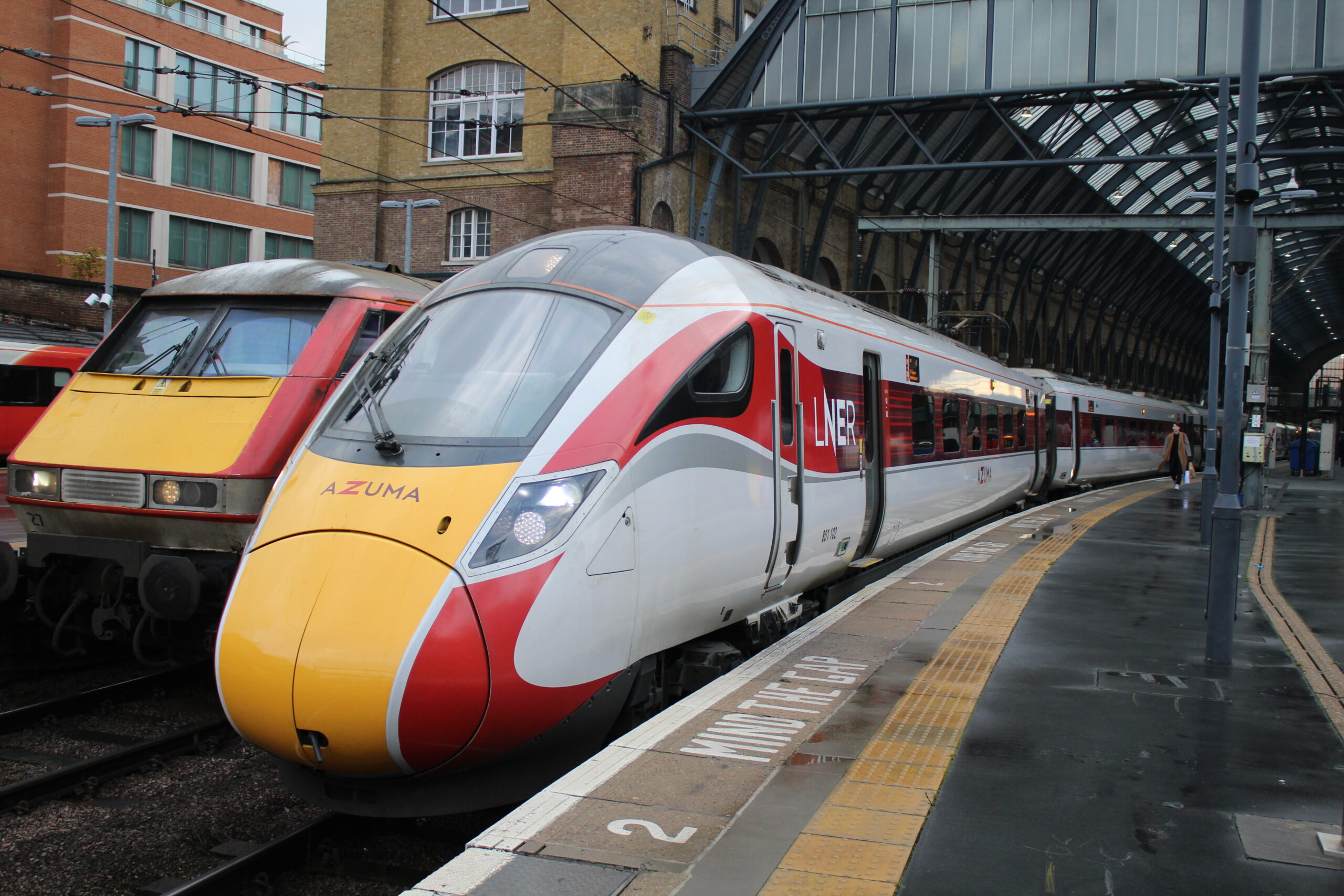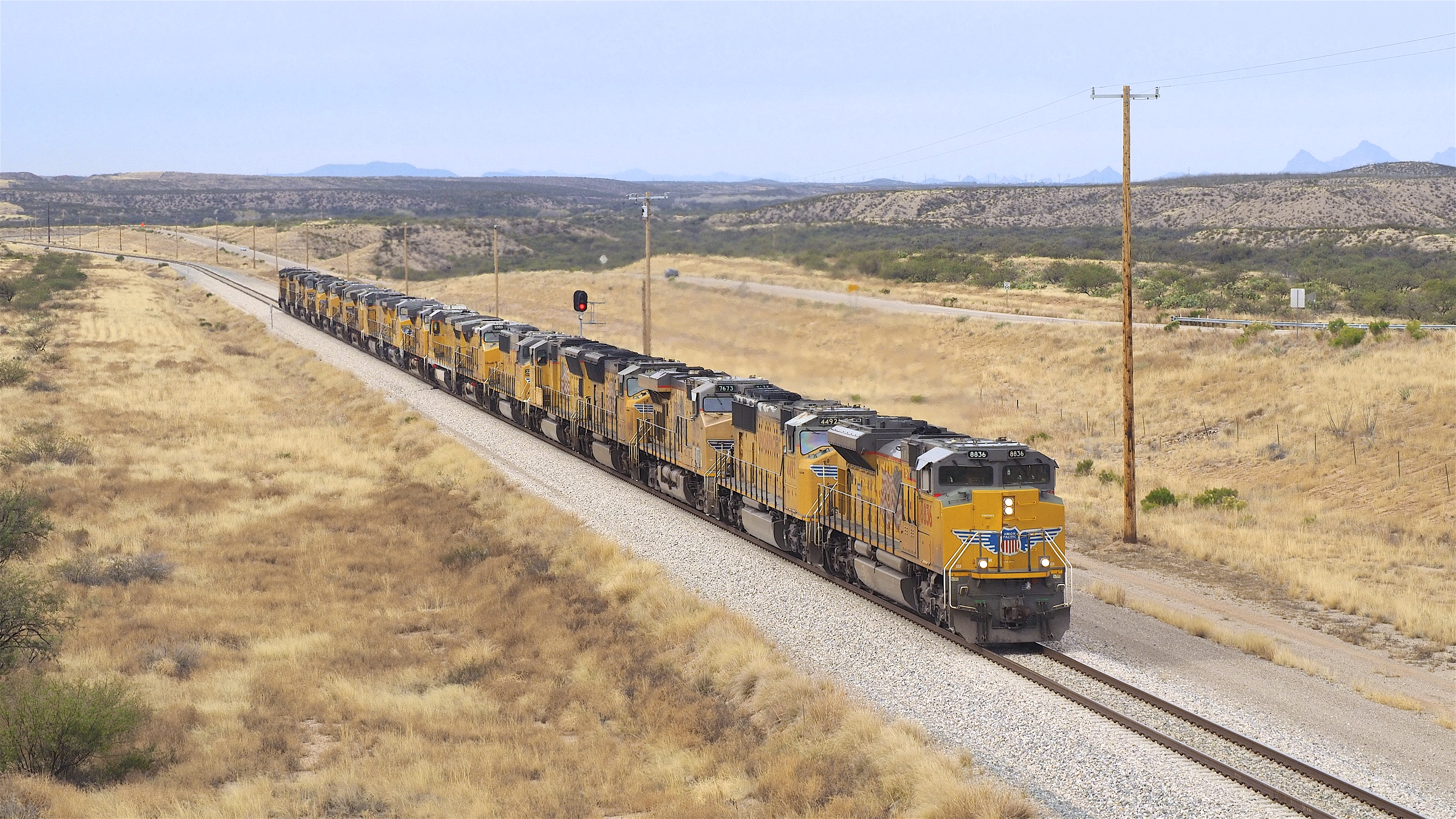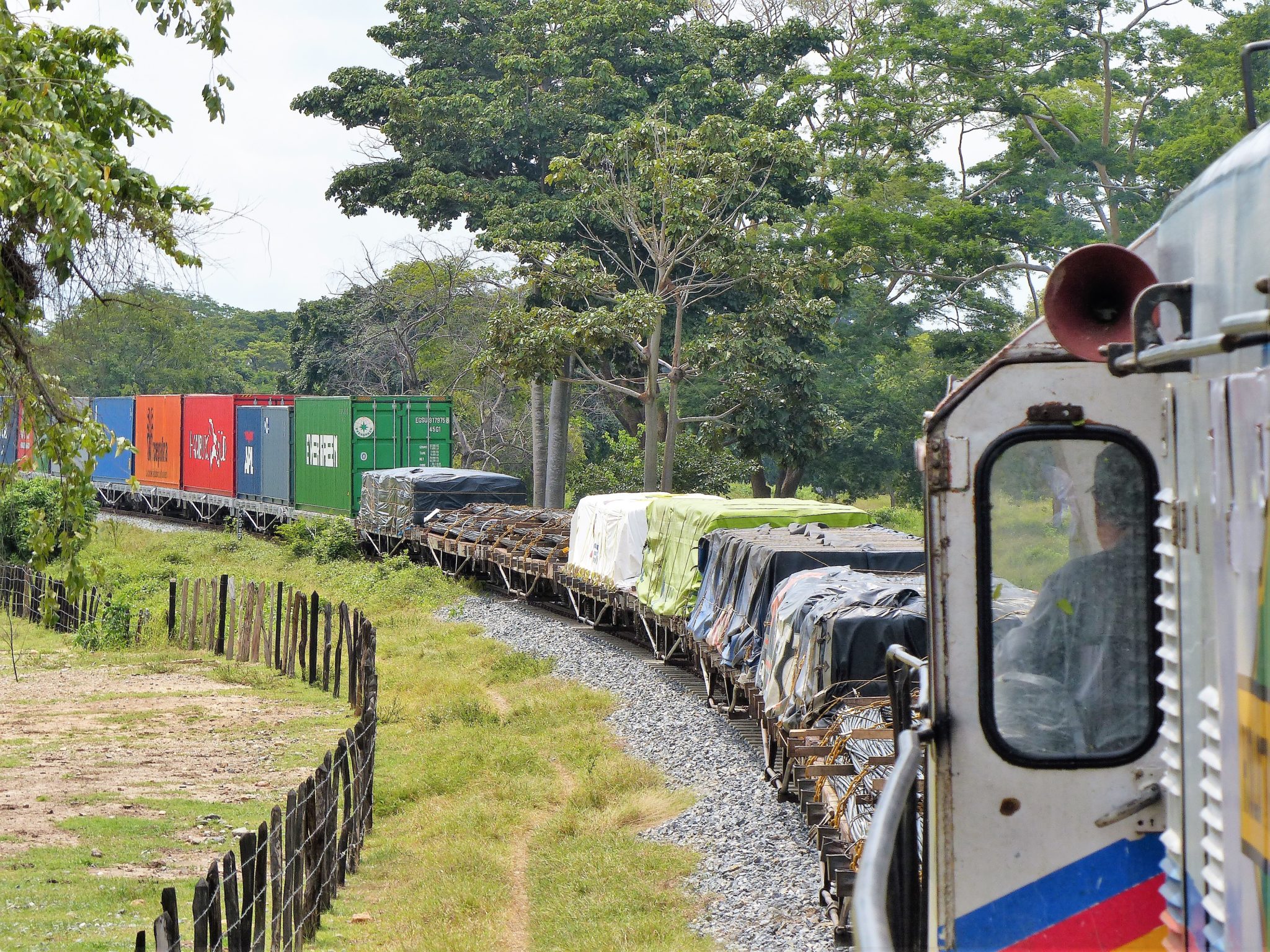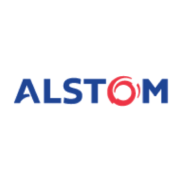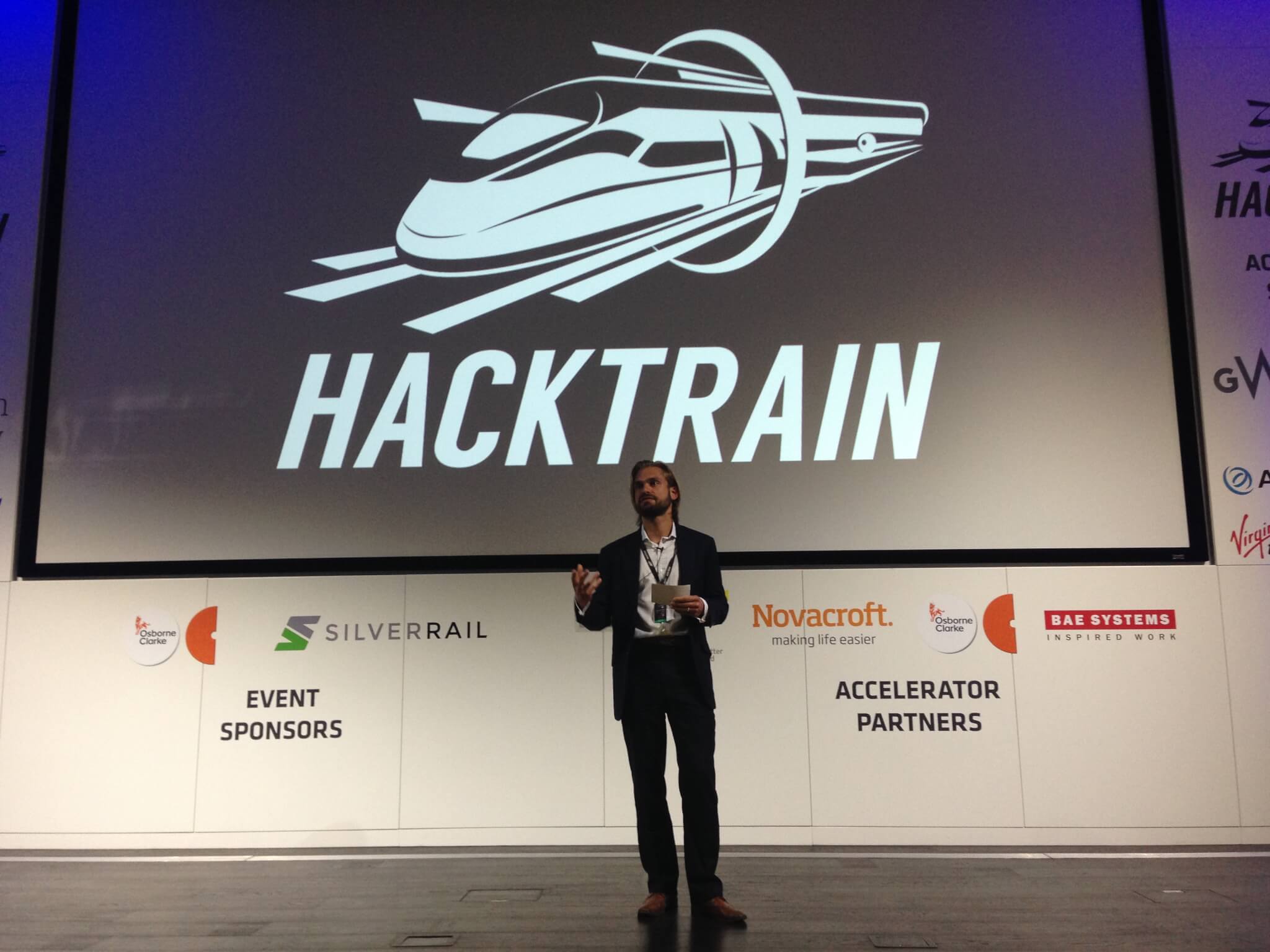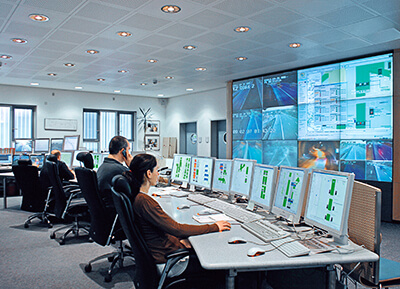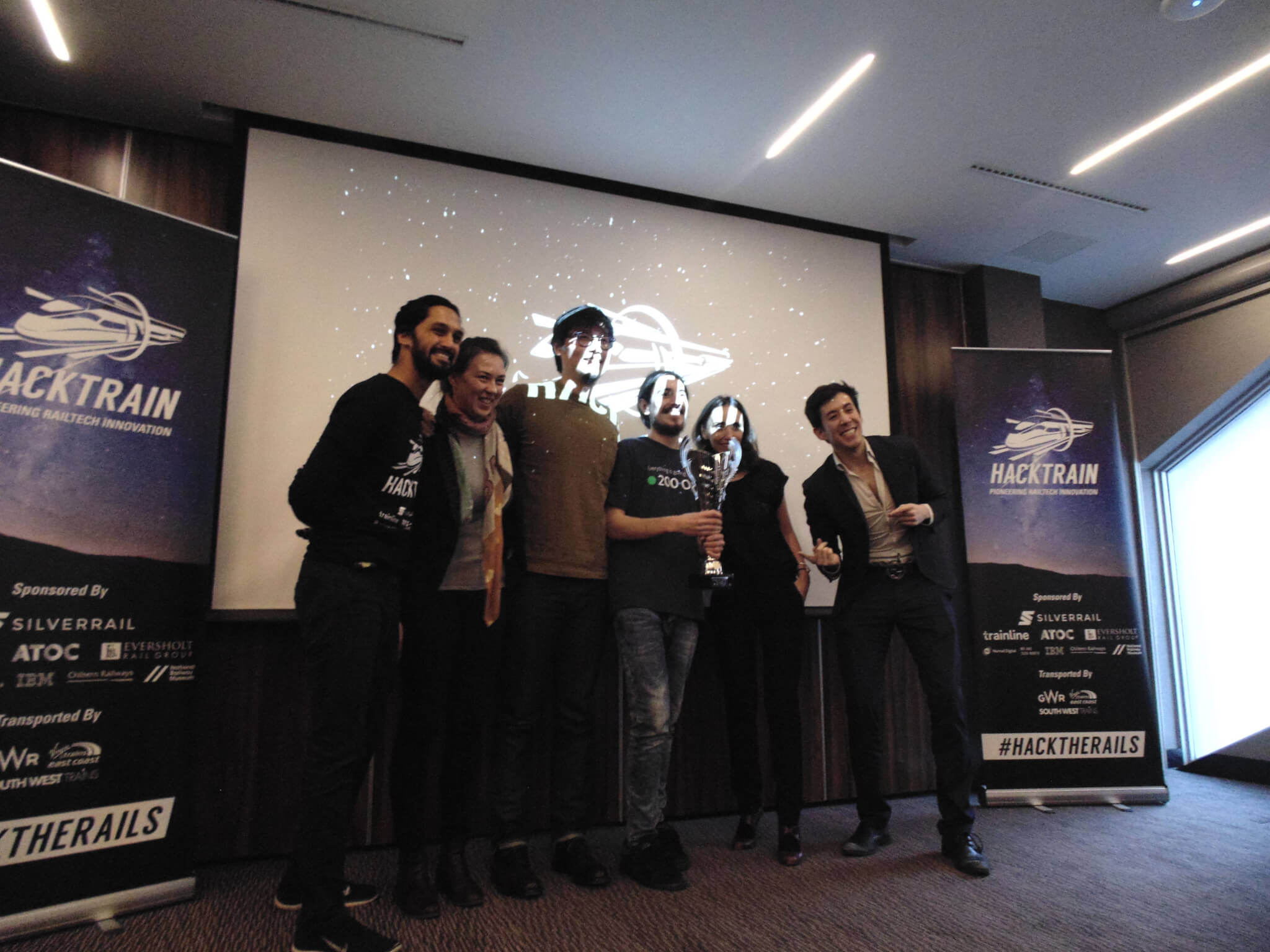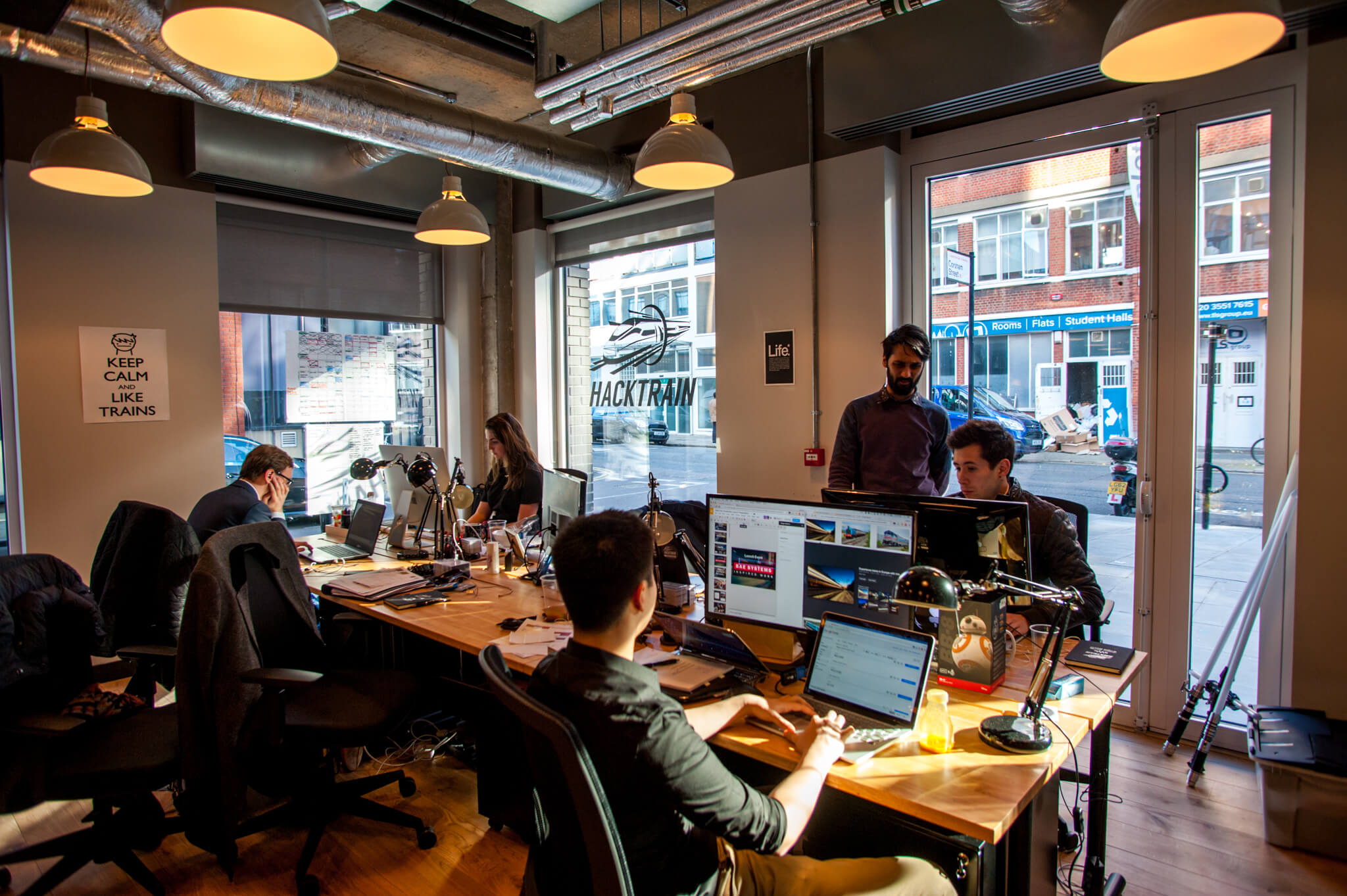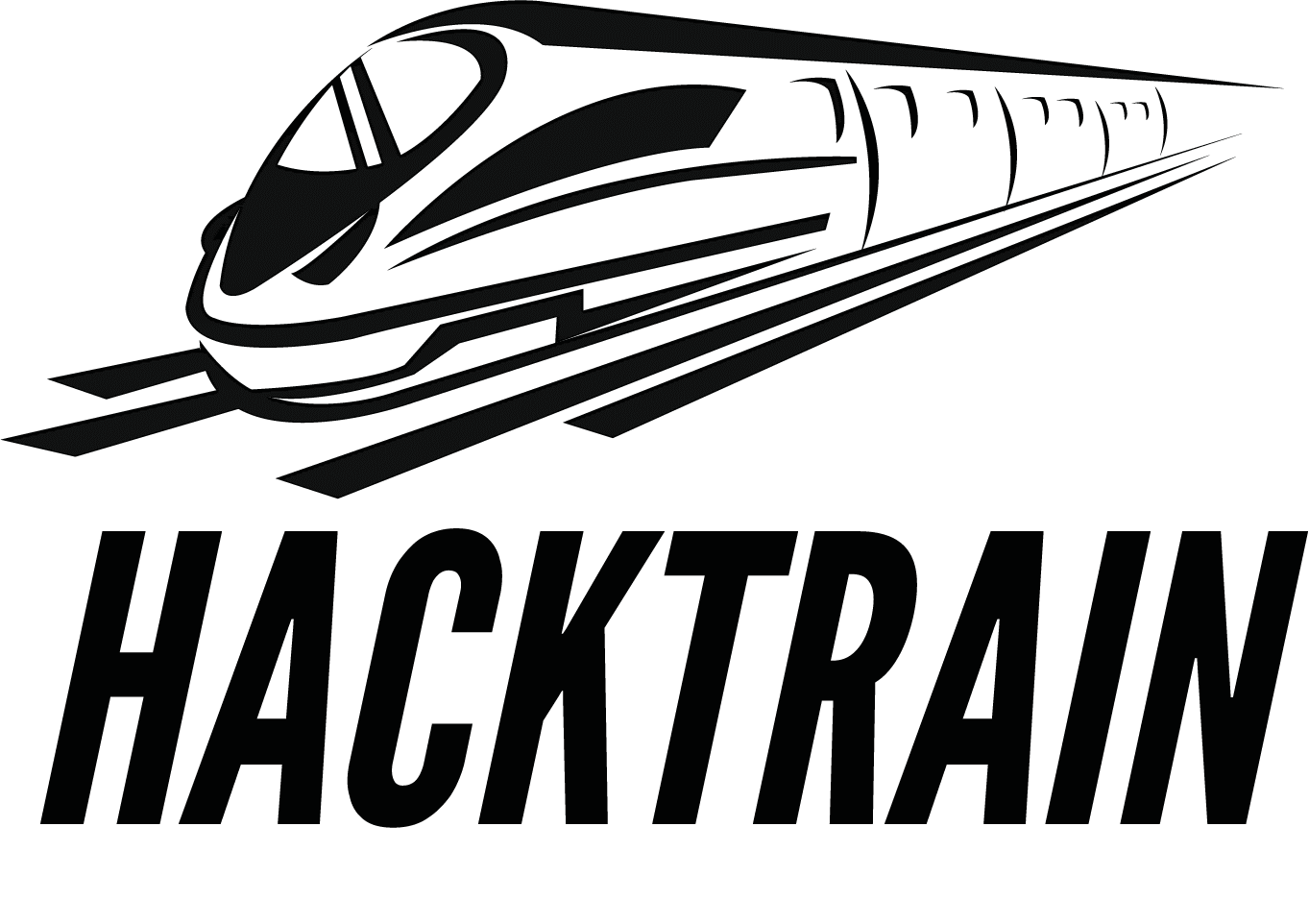Barriers to Innovation in the Rail Industry

After having run hackathons to bring innovation to the rail industry, HackTrain have now taken it one step further and have produced a report, the BARRIERS report, which stands for Bringing Actionable Recommendations to Revitalise Innovation and Entrepreneurship in the Rail Sector. A key part to change is identifying where the problems lie.
A point about rail customers: in all other areas of our lives, we’ve become used to innovation and progress, so we expect that same level of service from train operating companies and it’s not there. Rail needs to make sure it doesn’t lose its customers. It needs to win over new customers. The report points to other cases where innovative ideas have simply overtaken an area by being more innovative – such as Netflix and Uber. But why this lack of innovation? After conducting more than 60 interviews, this report has identified 5 key barriers:
- The franchising system is not designed to drive or reward innovation:
once a franchise is agreed, there is no more competition and hence no pressure to innovate. In addition, investment takes place early on in the franchise to get maximum value for money out of, meaning there is not much change during the final years of a franchise, and customers notice. - Procurement frameworks are unfit for entrepreneurs:
The ability to access contracts is difficult and to get non-safety critical technology off the ground is difficult and long-winded. - Data is fragmented, siloed and unreliable:
In the rail industry, open data feeds are unreliable and there is no documentation for developers. Technology contracts inhibit innovation in part because they have unreasonable data ownership constraints. - The funding landscape is difficult to navigate and is not output driven:
Although there are several funding options in the rail industry, they can be hard to access and onerous in their restrictions, proving to be too large obstacles for SMEs. - The culture in rail is resistant and reluctant to grasp innovation:
Mindsets have to change so that rail is seen as a service that needs to keep up with the rates of innovation in other industries to remain viable. It is vital that train operating companies listen to their customers, otherwise they face being left behind.
However, HackTrain haven’t just identified these barriers; they’ve come up with tangible recommendations on how to improve the industry. They want to know if the safety board should really oversee innovation. They want every TOC to have an innovation manager. They want the Department for Transport to commission a ‘Data in Rail’ report to get an understanding of the state of data in this industry. They say there should be one industry-wide monitor of customer satisfaction levels. Grants should be handed out differently. HackTrain believes there needs to be an innovation centre for rail. They want franchises to be outcome oriented. All TOCs should have a single place where they post their procurement opportunities. I could go on. These are just a few of their conclusions. It is obviously beyond the scope of this article to address them all.
However, I want to highlight a couple of points mentioned in the report – to whet your appetite to go read the whole thing. They note that competition is key to driving innovation and cite Italy as an example. It has introduced more competition on its important routes. State operator Trenitalia had held a monopoly. But in 2011 Nuovo Transporto Viaggiatori Italo was founded and has caused an increase in competition, leading to better standards for both companies, such as WiFi and Sky television. Ticket prices dropped by 35% between 2012 and 2014, increasing the market share rail has compared to other forms of transport. In fact, this shift was so noticeable, RyanAir ceased its Milan to Rome flights as a result of the improved rail service.
Another is OptaSense, a British company set up in 2008 that provides real time data that can monitor entire rail networks to deliver information about track condition and detect major incidents such as landslides and more. Despite having won awards for trade and innovation, less than 1% of their business is in the UK. The company struggled not with its ideas but with finding out who in the industry was responsible for providing the approval. We want the benefits of this innovation in this country too so we need to have an open environment to test new innovations.
The B.A.R.R.I.E.R.S. report has thus identified concrete barriers, recommendations and case studies highlighting systemic errors and opportunities. You can read the whole report at report.hacktrain.com. I spoke to HackTrain founders River Tamoor Baig and Alejandro Saucedo as well as the report’s project lead Amber Westerholm-Smyth to tell me a little more about the findings.
What led to the commissioning of this report?
River: After we ran the first hackathon in March 2015 there was a lot of demand from the industry in using the technologies our participants created. However, not a single prototype made it to the market.We knew there were barriers preventing innovation from getting to the hands of customers and station staff, but couldn’t pinpoint what the exact problems were.
We figured they were not alone in facing these challenges and wondered if anyone had started collecting these barriers so that the industry could work on solving them together. And so the idea to produce a report was born!
We shared the idea with RSSB who were excited by the project and offered to fund it. RSSB initially released half the funds; however we soon found various barriers stemming from them. Unfortunately, RSSB declined to recognise these barriers so to ensure the report was as objective as possible we decided to terminate the contract prior to the release of the secondary funds.
How did you set about this massive task of interviewing so many people? How did you choose who to interview? Was there enthusiasm to participate in this report?
River: Myself and Adam Stead [a rail consultant] introduced the report’s Project Lead, Amber, to an initial set of 20 rail professionals from which she was able to extend her network through introductions and referrals. Interviewees were based on their experience and role in the industry. In particular, we tried to speak to people who had attempted to introduce innovation in the rail industry and struggled with the barriers.
As Amber met and interviewed them we quickly knew which ones were supportive of the report and would speak on/off the record and which ones didn’t think anything was wrong in the industry and thus weren’t supportive. There were a handful of times where we had industry professionals say to us “there are no barriers within the industry and we do not struggle to innovate”. We actually met one such person at a conference a week before the report was released who then stated “the industry if rife with problems”. All in all, most people were very enthusiastic and wanted to share their story on how they tried to innovate and what challenges they faced when doing so.
Amber, can you tell me a little bit about your background and how you got involved with the HackTrain initiative
Amber: River and Alejandro approached me to see if I would be interested in project leading the report. I had gathered a fair amount of research experience during my degree at Oxford University and had been focusing on the impact of social innovation in public services. The UK rail industry caught my imagination as an industry integral to the economy but one that was rapidly falling behind the innovation imperative. I was really interested in figuring out whether it was a lack of incentive or if there were larger issues at play. So when River and Alejandro approached me with this project I was keen to jump on board.
I have outlined the key findings above. Was there broad consensus across the board or were there areas of disagreement among industry members?
River: On the whole there was broad consensus, the only difference in opinion that emerged was over the weight that each industry member apportioned to each barrier. Because the railway is a sum of its parts, there are certain barriers that some members had a wealth of experience hitting but others hadn’t come across because that area didn’t cross their workstream. The difficulties in trialling technologies is a perfect example of this. For others, a barrier such as the lack of competition within a franchise was more widely recognised. The lack of visibility of the barriers was one of the things the report aimed to tackle. By collating all the barriers in one centralised point it shone light on to issues that previously may only have been discussed by those they directly affect.
I know you describe for the purpose of this report what can be done within the franchising system, but do you think the rail industry in this country would ultimately be more innovative if that system wasn’t in place?
River: The franchising system has good intentions. It’s designed to increase competition in a heavily regulated market by getting transport-owning groups to bid for routes… The reason why the system hasn’t worked as well as it could have is because we have been line for line specifying what innovation should be implemented within franchises – it’s known as input specification. As a result, technology has been too prescriptive and has become fast outdated. In reality, what we really need, and what has worked well in other industries, is outcome-based specification.
What’s the difference? Well, for example instead of specifying “We want 5Mbps WiFi on all trains” we should and be specifying “We want WiFi that is market standard of that year on all trains” or “We want WiFi that 90% of passengers are happy with”.
This approach is more responsive to passengers’ needs and ensures that TOCs are continuously improving their services.
There has been progress towards making this the standard. The DfT has begun moving towards this type of outcome-based specification and we should hopefully see the results of it over the years across various franchises.
In your third barrier regarding data in rail, you say that tenders with ancient specifications are released that are hidden to external suppliers and impossible for SMEs or external companies to find. Are you saying that if I wanted to bid for a tender, I couldn’t because I wouldn’t be given access to these specifications?
Alejandro: Yes and no. Tenders are accessible online, but the problem really lies with how easy that information is to access, digest and use. As an industry we are very inward looking, we often assume that everyone understands the structure and endless acronyms. And so, we are also very bad at publically advertising new opportunities to companies outside of rail. Rail is already a very tough environment to succeed in as an SME so why are we making it even harder?What we need to do is promote tenders outside of the industry, on platforms where the tech companies of Silicon Roundabout and Valley reside. Only then will we have new technology entrants coming to the market and really shaking up the industry.
I like the comparison with Netflix and Uber to explain how innovative companies have simply overtaken traditional competitors who didn’t have the vision or the courage to adapt to the future needs of their customers. Is there some complacency in the rail industry that no one else can compete with it because they won’t have access to the rail network? What threats do you see out there?
River: Most definitely. An infinite amount. Just like the local taxi operators and blockbuster! The carpet will be swept out of transport-owning groups’ feet if they don’t fully embrace innovation and actively address passengers’ key issues.
That said, we have started to see a culture change. Some have decided we need to start doing things differently. By working with us on the accelerator and participating in the research for the report, many have shown they are able to, willing and are addressing the needs of customers. The real difference will be made when the rail industry starts recognising innovation as a full time job. Until they devote the resources and time needed – such as having a full time innovation manager in each TOC – innovation will consistently fall to the bottom of the to do list.
There are two biggest threats that will hit the industry hard. First is when a new bidder enters the UK market and takes a technology service approach towards running the railway rather than what we see today, which is more of an operational approach.
Secondly, driverless vehicles have the potential to create a mass exodus in rail. Being able to be transported straight from your home to any other location in the UK without having to put your hand on the wheel will fundamentally change our idea of travel. The convenience of it will see an increase in car usage in the UK like never before. Rail should be very, very worried about this.
If it doesn’t become part of this connected system, it will miss out on a being part of the end-to-end journey experience.
The most surprising thing I learned at the presentation of this report was that the safety board (RSSB) overseas innovation in the rail industry. As you pointed out, innovation and safety are diametrically opposed. What was the most surprising thing you learned while creating this report?
River: It was actually really surprising to learn how many innovation boards there are in the industry. It showed that the rail industry knows it has an innovation problem and that it is trying to do something about it but just not with the collective effort needed. The number of boards just emphasised how fragmented and siloed the industry can be in approaching challenges. You can talk and talk, write several strategies, make grand announcements, allocate funds but at the end of the day, if the passengers are not seeing the benefits of such efforts, something is going wrong.
What are some of the more positive developments you already see happening in the rail industry?
River: One of the most important things we have seen is the work of the passenger services team at the DfT. They have really recognised the limitations of the franchising system and have focused on working around them by changing their strategy for franchise agreements. Perhaps the most significant change has been the movement from input specification to output specification and increasingly outcome specification. Such efforts are already having considerable impact. The franchise agreement for Essex Thameside for example was output specified and has seen numerous benefits for customers inputted such as automatic delayrepay and free WiFi at stations.
Equally, there seems to be a real desire from the owning groups to connect with entrepreneurs and SMEs trying to bring innovation into the rail industry. This really became clear when we saw 5 out of 6 of the owning groups commit to sponsoring the accelerator.
It is really critical that other stakeholders follow their lead and do their part.
The report doesn’t just identify the barriers to innovation but delivers tangible recommendations that various players in the industry can adopt. To what extent will HackTrain work with these players to push for these recommendations to be adopted?
Alejandro: We’re very passionate about each of these recommendations and would like to see all of them realised.
For example, there is a critical need for a RailTech Hub. For the new entrants the fragmentation in the industry generates a sense of uncertainty about how decisions are made and where to go for further information. It also inhibits those already part of the industry who wish to push through innovative ideas or have recently been given innovation-based jobs.
Given the numerous other bureaucratic barriers to innovation, it is troublesome that something as simple as support and regular information for those wishing to undertake innovation projects is subject to its own degrees of bureaucracy and is not consistently available from a clear source. We noticed what a difference having a RailTech Hub made during the accelerator as a centralised point for people to meet, talk and discuss the topic of innovation.
What was really the critical difference is that the focus was on innovation happening that week or the following month rather than on the long timescales rail usually operates on. We can’t stress the importance of something more permanent being created. However, for such a hub to be engaged with by the whole industry, we recommend that the Department for Transport and Train Operating Companies jointly fund a new national cross industry innovation centre for rail.
Data has become a bit of an ‘elephant in the room’ in the rail industry. Rail has neglected data and in doing so it has neglected its customers.
There are multiple barriers that need to be addressed. Open datafeeds in rail are often unusable due to low reliability, inconsistency, and do not have set standards, documentation for developers is poor or inexistent and current technology contracts are monopolistic and archaic, inhibiting the potential for innovation. We would like to lead a data review that assesses the current data ecosystem in the railway industry. This report should be commissioned by the DfT to review the previous, current and future investments in the core data systems in rail.
At the same time, we recognise that we can’t make all of them happen on our own, the industry needs to step up to the challenge and lead some of them too. The HackTrain are happy to help advise on how to implement some of the recommendations and in other areas we would like to lead them.
To what extent do you see this lack of innovation in rail being a UK problem, rather than a problem faced by the rail industry in other countries?
River: It’s a problem in all countries. Even ones constructing new railways are building them using methods and technologies from the 20th century! We as an industry, globally, need to be a lot more ambitious when it comes to delivering services for our customers. I think one of the main problems is that we are too focused on day-to-day operations. As a result, the rail industry globally is busy solving today’s problems with yesterday’s technology. We need to find a way of devoting resources, time and intelligence to sourcing smart solutions that solve our challenges, not only today but also preempt tomorrow’s problems.




















